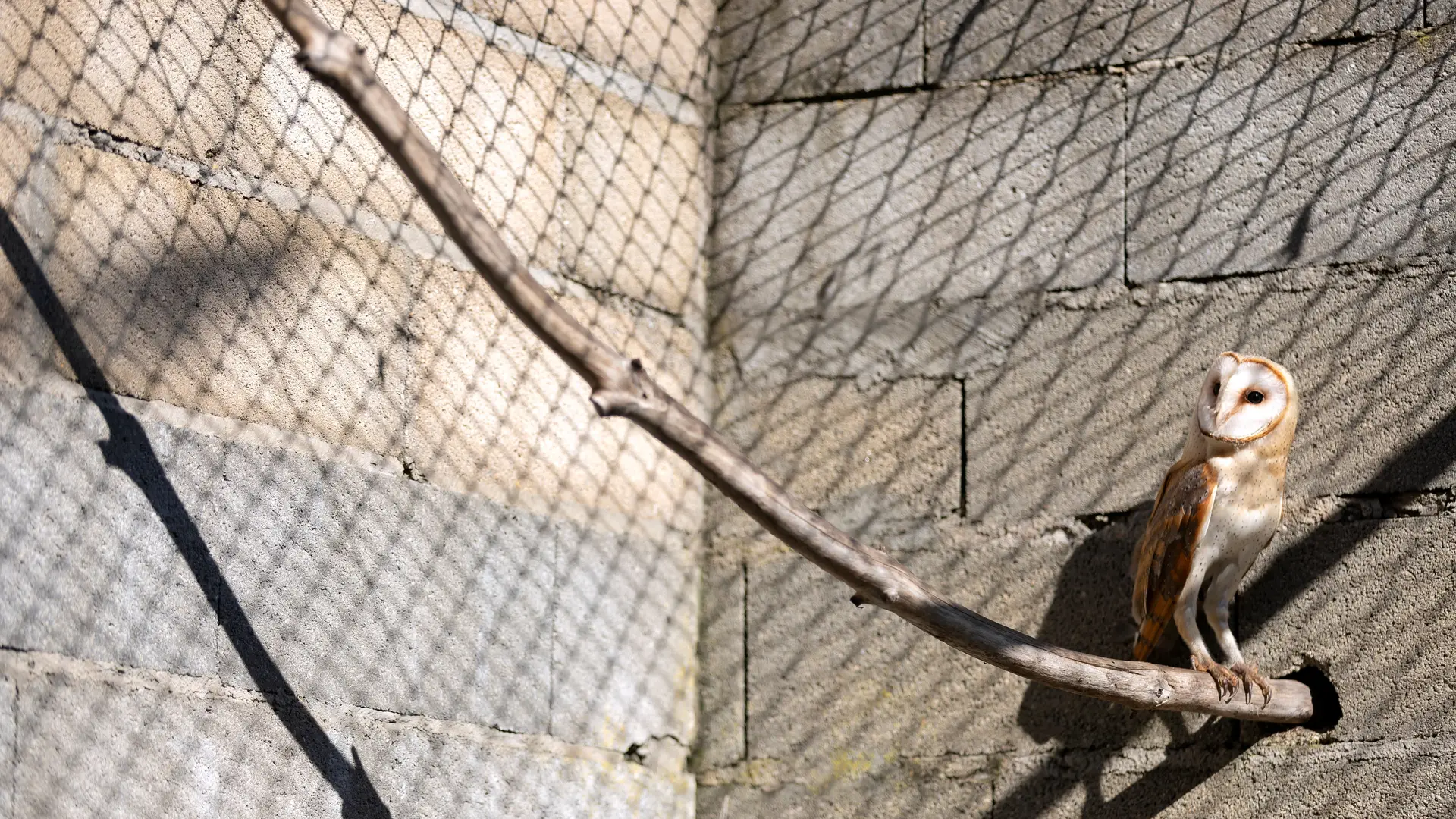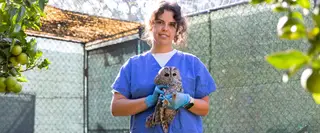The “birdsitter” tawny owl has become part of the furniture at the facility. She arrived at CRASSA (Santo André Wildlife Rehabilitation Centre) in April 2022 with an injured wing after falling out of the nest, from which she has never fully recovered, despite physiotherapy. Nursing a crooked wing and being so used to humans due to the time she spent in illegal captivity in the past, would make it impossible for her to readapt to her natural habitat. She is now doing well, despite having been classified as having no chance of rehabilitation, and helps other nocturnal birds of the same species admitted to the sanctuary to recover. Her keen maternal instinct enables her to adopt orphaned young birds, help them to socialise and teach them to fly and hunt.




Every animal arriving at this facility on the Alentejo coast has a unique story, full of challenges. The case of this tawny owl is just one of many examples of the impact and dedication of CRASSA, which, together with the Castelo Branco Wildlife Research and Rehabilitation Centre (CERAS) and the Montejunto Wildlife Rehabilitation Centre (CRASM), is managed by the environmental organisation Quercus with the mission of welcoming, treating and returning debilitated, injured and orphaned animals from our native wildlife to their natural habitat, in addition to conducting other activities within the scope of environmental research and education. This organisation is part of the National Network of Wildlife Rehabilitation Centres under the responsibility of the Institute for Nature and Forest Conservation (ICNF) and is located at Moinho Novo da Galiza, an old water mill, in Vila Nova de Santo André, in the municipality of Santiago do Cacém, an area that is part of the Santo André and Sancha Lagoons Nature Reserve. This location is particularly interesting with regard to conservation, as it is an important Protected Area due to its wetlands and birdlife.
The coordinator of these three facilities located in different areas of Portugal is Carolina Nunes, a conservation biologist who had spent her entire life in the Lisbon region until the day she decided to study in Evora, which offered the degree she was looking for, Animal Science and Technology. However, due to the fact that this course was focused more on animal production, she chose to specialise in another area. “Without a shadow of doubt, it was Conservation Biology that gave me my purpose in life”, she reveals, who first became interested in the world of animals and nature by watching documentaries on the National Geographic channel when she was a child. Over time, this initial curiosity turned into a genuine desire to further her knowledge on the subject, until she ended up deciding that this would be her future calling.


